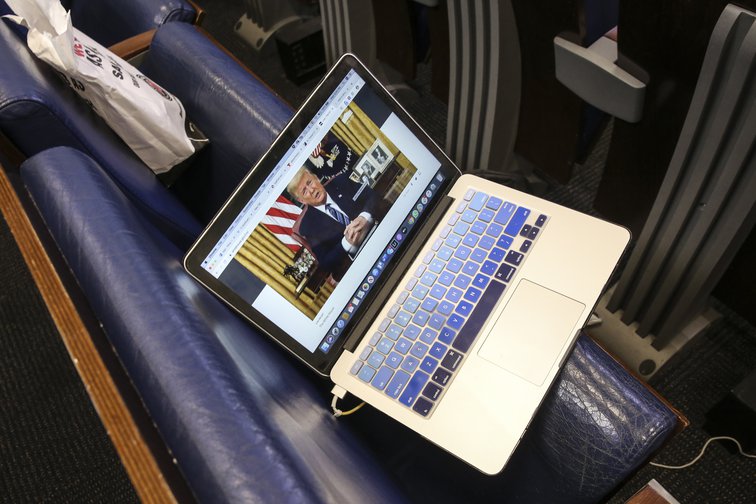
Coronavirus and the radical right: conspiracy, disinformation, and xenophobia
How is the radical right using the COVID-19 pandemic to advance their political agenda?

On March 11, 2020, the World Health Organization officially declared COVID-19 a pandemic. Originally identified in Wuhan, China, in late December, COVID-19 is a novel coronavirus that causes flu and pneumonia-like symptoms. As of March 12, 2020, the number of infected persons worldwide has surpassed 100,000, with nearly 100 countries reporting cases of the virus.
In the United States, response to the crisis has been slow. Initial reports of the virus’s presence were reported in the pacific northwest region in the Seattle area, and has since spread to nearly every single U.S. state. Notably, the response to the crisis by the right-wing media establishment may be contributing to this lack of response by the government to control the growing number of cases. In particular, the Fox News media machine, right-wing social media pages and accounts, and right-wing “celebrities” have been spreading considerable amounts of misinformation, xenophobia, and conspiracy theories about the virus.
The themes that emerge from these conspiracy theories point to fears and anxieties typical of the right-wing surrounding globalization, multiculturalism, and government cover-ups
We’ve got a newsletter for everyone
Whatever you’re interested in, there’s a free openDemocracy newsletter for you.
The conspiracy theories about the virus range from it being a biological weapon created by the Chinese government, that it is a conspiracy created by U.S. democrats to prevent Trump’s reelection, or that the CIA created the virus in order to lessen China’s power. Another conspiracy theory that has been circulating, due to a QAnon conspiracy theorist on YouTube, is that the COVID-19 pandemic was created by the Pirbright Institute in England and by Bill Gates, former CEO of Microsoft. The themes that emerge from these conspiracy theories point to fears and anxieties typical of the right-wing surrounding globalization, multiculturalism, and government cover-ups on the level of the belief of a “New World Order.”
Related story
Additionally, Twitter analysis found that there are number of bots that are intentionally spreading disinformation about the virus and the pandemic itself, further strengthening beliefs among conspiracy theorists and the radical right that the media is “overblowing” the significance of the virus. Donald Trump, the president of the United States, has actively been retweeting and sharing information that is blatantly false about COVID-19, specifically that the U.S. has contained the virus, as well as false information about the fatality rate.
Donald Trump, the president of the United States, has actively been retweeting and sharing information that is blatantly false about COVID-19
Conspiracy theories, misinformation, and propaganda have spread during all pandemics since the beginning of time. Desperate to understand and give meaning to the chaos that seems to be ensuing around them, people have always tried to find the “cause” or someone/something to blame for outbreaks of disease. What we are seeing today is similar in how people have historically responded to outbreaks of disease – however, what has changed since the last officially declared pandemic in 2009 of H1N1 (swine flu) is not only the number of cases and countries the virus has impacted, but also the technological evolution of social media and the far-right online ecosystem.
Thus, understanding the role that social media and networks of connectivity have in using pandemics discursively for the radical right is crucial in examining how this discourse will evolve in the coming months.
“The medical deep state”
COVID-19, like other pandemics, has been politicized among the far-right in the United States and worldwide to stoke the fire of Sinophobia, hatred toward the left, and xenophobia toward immigrants in general. The stark differences between the ways that right wing media and official sources (like WHO) refer to the virus highlights the ways that the pandemic is being politicized. For instance, Fox News personalities like Tucker Carlson and Laura Ingraham repeatedly refer to COVID-19 as the “Chinese Coronavirus” or even “the Wuhan flu.” These intentional choices in how news media are naming the virus also point to the ways that outbreaks are used to stigmatize entire groups of people. Right-wing media figures have also used the outbreak to justify the building of the border wall, to halt immigration, and to disparage the U.S.’s dependence on the Chinese economy.
From a scholarly standpoint, research on conspiracy theories as well as rumors can highlight the mechanisms by which these beliefs are not only cultivated but spread. Research has shown that conspiracy theories often emerge during times of crises as a means of trying to take back control over a chaotic world. In particular, groups that feel the most powerless and helpless in general are the ones most likely to embrace conspiracy theories.
Right-wing media figures have also used the outbreak to justify the building of the border wall, to halt immigration, and to disparage the U.S.’s dependence on the Chinese economy
Disinformation campaigns during this time, then, are used to not only take advantage of a situation to reduce uncertainty and to make people embrace this version of truth for nefarious purposes, and correcting disinformation is a difficult if not almost impossible task. The 24-hour news cycle and a click-based model of engagement for consumers is further confounding the information environment, making attempts to correct false information often futile or they sometimes even backfire.
Rumor and disinformation, then, find a fertile breeding ground for their creation and spread during times of distress and uncertainty. Particularly, rumor researchers point to the need for humans to make sense of their world for an explanation as to why rumor persists in communities. During a pandemic, powerlessness and helplessness is exacerbated further because people are actively guarding themselves against something that they cannot see. In lieu of being able to fight a “physical” virus, they then turn their blame towards things that are more tangible: in the context of the United States, these tangible figures of blame (and subsequent attack) are Asians and Democrats.
During a pandemic, powerlessness and helplessness is exacerbated further because people are actively guarding themselves against something that they cannot see
The term “attack” is literal here – reports of physical attacks and other acts of discrimination targeted towards Asians and Asian Americans in the United States has gone up since news broke of COVID-19, and has only increased as the virus spreads across the country. For some, the virus is being used as a justification to act out already held racist beliefs and attitudes towards Asians, who historically have been treated as a form of “yellow peril” that would invade and destroy.
Rumors, hoaxes, and conspiracy theories that have been spread during this time not only reify historical beliefs about Asians in the West but also present information in a causal structure that make them not only easy to remember, but easy to repeat and share with others. The politicization of COVID-19 by the far right, then, points to the ways in which these modes of discourse serve as narratives that reinforce a group identity and worldview that has a historical basis.
Currently, we have seen the immediate impact of these disinformation campaigns by witnessing not only the disinformation being repeated by reporters and by the lack of response from the highest levels of government in the United States. Although these rumors and conspiracy theories may serve a function for collective sense-making on the right, only time will tell how the COVID-19 pandemic will be used for political means moving forward.
Read more
Get our weekly email


Comments
We encourage anyone to comment, please consult the oD commenting guidelines if you have any questions.